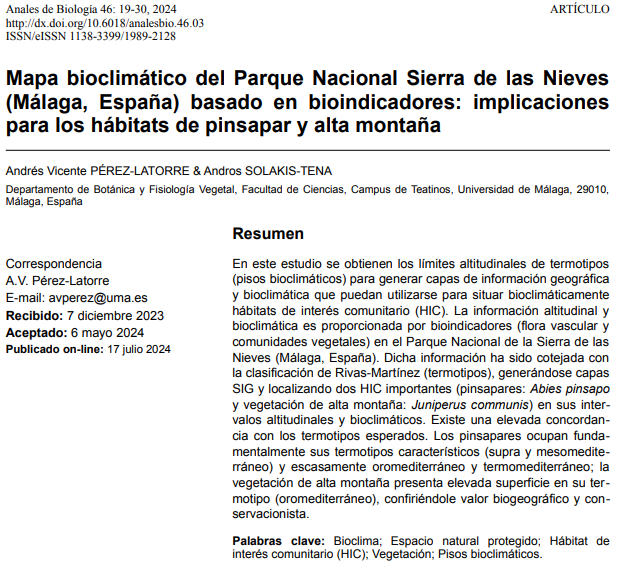We have studied the phenology of the relict winter-deciduous forests of Sierra Nevada (Granada, Spain)
Phenology in winter-deciduous relict Mediterranean forests as a tool to understand their adaptation to climatic seasonal cycles
Se ha publicado en NORDIC JOURNAL OF BOTANY
Se han estudiado la fenología reproductiva y vegetativa y los grupos funcionales fenológicos de todos los árboles y arbustos que conforman los bosques caducifolios reliquias de periodos más fríos y húmedos, que subsisten en la cara norte de Sierra Nevada, en la cabecera de los ríos permanentes, que nacen en las antiguas cuencas glaciares.
Sobresalen tres especies, que funcionan fenológicamente de modo distinto al resto: Taxus baccata, Fraxinus excelsior y Salix caprea.
El listado de especies estudiadas es: Acer granatense, Berberis hispanica, Betula fontqueri, Cotoneaster granatense, Crataegus granatense, Fraxinus excelsior, Lonicera arborea, Malus sylvestris, Prunus avium, Prunus ramburii, Quercus pyrenaica, Quercus x trabutii, Rhamnus cathartica, Rosa corymbifera, Salix caprea, Sorbus aria, Sorbus hybrida, Taxus baccata.


